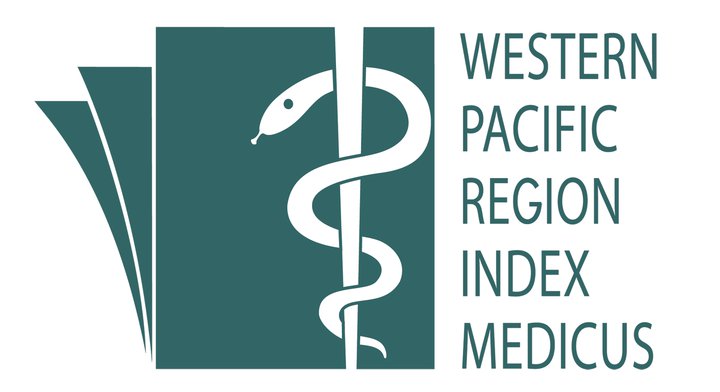Inadequate Iodine Intake among School Children in Terengganu- Findings from the National Iodine Deficiency Disorder Survey 2008
Keywords:
Iodine deficiency - School children - Median urinary iodine concentrations - Thyroid goiter prevalence - TerengganuAbstract
Introduction
Iodine deficiency is still prevalent worldwide and it is the main cause of goiter, thyroid dysfunction and mental retardation. The aim of the study was to determine the iodine status and goiter prevalence among the school children in Terengganu.
Methods
The representative sample consists of 1163 primary school children aged 8-10 years old randomly selected from urban and rural schools in Terengganu using stratified systematic random sampling technique. Urinary iodine levels in spot urine were determined by in house modified micro-method while goiter assessment was carried out by palpation of thyroid gland. The status of iodine deficiency was determined by the median urinary iodine concentrations (UIC) and total goiter prevalence (TGP) in accordance with the WHO criteria.
Results
The result showed the median [inter-quartile range (IQR)] urinary iodine concentrations was 78.7µg/L (50.1µg/L -120.0µg/L) indicating the iodine intake was slightly lower than recommended range of 100 µg/L. The rural school children had a significantly lower Iodine levels (median UIC=72.4µg/L, IQR=46.7µg/L -113.0µg/L) than the urban school children (median UIC=87.7µg/L, IQR=54.5 µg/L - 127.5µg/L). The total goiter prevalence (TGP) was 5.7%. The prevalence of goiter was significantly higher in rural (TGP=6.9%) compared to urban areas (TGP=3.6%).
Conclusions
The study revealed that school children in Terengganu showed mild iodine deficiency and the condition is more pronounced in children from rural areas. The findings emphasize the importance of intervention implementation, universal salt iodization to ensure sufficient intake of iodine among the Terengganu school children.
Â
References
Zimmermann MB. Iodine requirements and the risks and benefits of correcting iodine deficiency in population. J Trace Elem Med Biol. 2008; 22:87-9.
Hetzel BS. Iodine deficiency and the brain: an overview. In: Preedy VR, Burrow GN, Watson R, editors. Comprehensive handbook of iodine. Burlington: Academic Press; 2009.
Andersson M, Benoist BD, Hill ID, Delange F. Iodine deficiency in Europe: A continuing public health problem. Geneva: World Health Organization. 2007.
Wu T, Liu GJ, Li P, Clar C. Iodised salt for preventing iodine deficiency disorders. The Cochrane database system review. Hoboken: Wiley Publisher.
WHO. Iodine status worldwide: WHO global database on iodine deficiency. Geneva: World Health Organization; 2004.
WHO/UNICEF/ICCIDD. Assessment of iodine deficiency disorders and monitoring their elimination. 3rd ed. France: World Health Organization; 2007.
Institute for Medical Research, Ministry of Health. Executive summary of iodine deficiency disorders in Peninsular Malaysia. Kuala Lumpur. IMR; 1996.
Rusidah S, Wan Nazaimoon WM, Ahmad Ali Z, Nor Syamlina CAR, Suhaila AG, Tahir A. National Iodine Deficiency Disorder (IDD) survey 2008: Main study finding. Kuala Lumpur: Institute for Public Health; 2009.
Husniza H, Wan Nazaimoon WM. A cost effective modified micro method for measuring urine iodine. Trop Biomed. 2006; 23(1): 109-115.
Gordon R, Rose M, Skeaff S, Gray A, Morgan K, Ruffman T. Iodine supplementation improves cognition in mildly iodine deficient children. Am J Clin Nutr. 2009; 90(5): 1264-71
Lim KK, Siti Rohana D, Zawiah A, Wan Nazaimoon WM. An evaluation of the effectiveness of water iodinator system to supply iodine to selected schools in Terengganu, Malaysia. Trop Biomed. 2006; 23(2):172-178.
Osman A, Zaleha Md. Isa, Letchumen R, Khalid BAK. The prevalence of goiter in remote inland versus coastal areas. Med J Malaysia. 1995; 50(3): 256-262.
Siti Norazah Z, Low WY, Rajeswari K. Environmental Health:Nutritional and developmental indicators of young children in Sarawak with focus on iodine deficiency. Kuala Lumpur: UMMC; 2001.
Sadeghipour Roudsari, Sherafat kazemzadeh R, Sendi H, Razaeie R, Derakhshan M, Zanoobian V, Hoseini N. Assessment of urine iodine in school children from urban and rural areas of Tehran in 2001. Pak J Med Sci. 2004; 20(2): 131-6.
Claudia M, Daniela T, Angelina DC, paolo EM, Eduardo C, Vincenzo M, Angela M. Iodine status assessment in Campania (Italy) as determined by urinary iodine excretion. Nutrition. 2009; 25: 926-9.
Benoist, BD, Mclean E, Anderson M. Iodine deficiency: The extend of the problem in comprehensive handbook of iodine. Burlington: Academic Press; 2009.
Chandwani HR, Shroff BD. Prevalence of goiter and urinary iodine status in six-twelve-year-old rural primary school children of Bharuch district, Gujarat, India. Int. J Pre Med. 2012; 3(1): 54-59.
Suriati A, Aida AR, Umi IA. Poverty rate in Terengganu down to 0.01% [Internet]. 2012 May 20 [cited 2012 June 15]; Available from: http://www. www.terengganu.gov.my.
Mu Li, Gary M, Karmala G, Steven CB, Eastman CJ. Re-emergence of iodine deficiency in Australia. Asia Pac J.Clin Nutr. 2001; 10(3): 200-3.
Skeaff SA, Thomson CD, Wilson N, Parnell WR. A comprehensive assessment of urinary iodine concentration and thyroid hormones in New Zealand schoolchildren: a cross sectional study. Nutrition. 2012; 11:31
Kotwal A, Priya R, Qadeer I. Goiter and other iodine deficiency disorders: A systematic review of epidemiological studies to deconstruct the complex web. Archives of Medical Research. 2006; 38: 1-14.
Benoist BD, Mclean E, Andersson. Iodine deficiency: The extent of the problem. In: Predy VR, Burrow GN, watson R (eds). Comprehensive handbook of iodine. Burlington: Academic Press; 2009. P. 459-67.
Foo LC, Zainab T, Goh SY, Letchuman GR, Nafikudin M, Doraisingam P. Iodization of village water supply in the control of endemic iodine deficiency in rural Sarawak, Malaysia. Biomed Environ Sci. 1996; 9:236-41.
Downloads
Additional Files
Published
How to Cite
Issue
Section
License
IJPHR applies the Creative Commons Attribution (CC BY) license to articles and other works we publish. If you submit your paper for publication by IJPHR, you agree to have the CC BY license applied to your work. Under this Open Access license, you as the author agree that anyone can reuse your article in whole or part for any purpose, for free, even for commercial purposes. Anyone may copy, distribute, or reuse the content as long as the author and original source are properly cited. This facilitates freedom in re-use and also ensures that IJPHR content can be mined without barriers for the needs of research.






